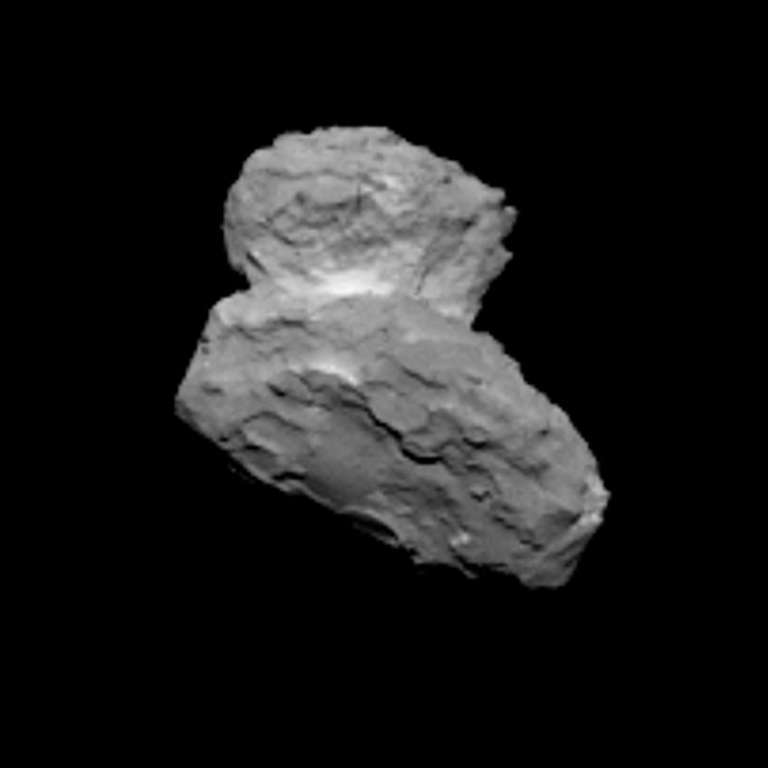Emily Lakdawalla • Aug 02, 2014
[UPDATED] New Rosetta images show comet's craggy shape
A new NavCam view of Rosetta's target comet, released this morning, gives us comet fans a new perspective on its craggy shape. UPDATE: And just an hour after I posted this NavCam image, they released an OSIRIS image, too. In both images, a shift in position has brought shadows into view from Rosetta, outlining scarps and ridges on 67P/Churyumov-Gerasimenko. Check it out:

Here's the newly released OSIRIS image, which seems to have come out this weekend in response to a leak:

Even though the resolution of the NavCam image was no better that the previous most recent OSIRIS image, it's easier to appreciate the shape of the comet from this NavCam view, because of those shadows. Compare these to the July 29 view from OSIRIS:

Those crags and scarps are reminding me (and other viewers) of the interesting topographic features that Stardust saw on Wild 2:

I can't wait to see what the next photos will reveal! Meanwhile, Rosetta has two rocket burns to go until its official arrival at its 100-kilometer stand-off distance from the comet. Here's a newsy update posted this morning by Daniel Scuka:
With about 500 km separating Rosetta from comet 67P, it is still necessary to reduce the spacecraft’s speed with respect to the comet by some 3.5 m/s.
The two remaining burns in the ten-burn series of orbit correction manoeuvres (OCMs) that are achieving this are dubbed CATP (Close Approach Trajectory – pre-Insertion) and CATI (Close Approach Trajectory – Insertion), and are planned for 3 and 6 August, respectively.
Here are the details for Sunday, 3 August.
The burn is set to begin at 11:00 CEST (09:00 UTC), will run for about 13 mins:12 secs and will bleed off some 3.2 m/s of speed.
“It will be initiated, as all of our OCMs have been, automatically by a stack of commands; these have already been pre-loaded on board Rosetta,” says Spacecraft Operations Manager Sylvain Lodiot.
“We also need to bend the spacecraft’s trajectory towards the comet, going from today’s 200-km miss distance to 70 km, and reduce the relative velocity to about 1 m/s.”
The final insertion burn – CATI – will be conducted on 6 Aug, after which Rosetta is set to achieve a speed substantially equal to the comet at a stand-off distance of about 100 km.
‘Orbit insertion’ is a bit of a misnomer, as the spacecraft will still be too far from the comet to be captured by its gravity into a bound keplerian orbit.
Orbit insertion means that Rosetta will in fact begin following a series of triangular arcs, each about 100-km long, and it will conduct a small thruster burn at each apex to swing onto the next arc and stay near the comet. The height of the arcs above the surface will be steadily lowered, until 67P/C-G’s gravity does capture the spacecraft (see How Rosetta Arrives at a Comet for details).
“All systems on the spacecraft are performing well and the entire team is looking forward to a smooth arrival,” says Sylvain.
Support our core enterprises
Your support powers our mission to explore worlds, find life, and defend Earth. You make all the difference when you make a gift. Give today!
Donate

 Explore Worlds
Explore Worlds Find Life
Find Life Defend Earth
Defend Earth

